Local Sculptor Thrives in Hollywood
Story by Matthew St. Amand
Photography courtesy Nick Marra Studios
After more than 30 years in Hollywood, LaSalle native, Nick Marra, is at the top of his game in a city not known for being kind to people’s dreams. In recent years, Nick has become renowned for his hyper-realistic silicone and bronze sculptures of such diverse subjects as actor Robert Shaw (“Quint” in the movie Jaws), Marlon Brando, Bryan Cranston, Clint Eastwood and the late Detroit Red Wing enforcer, Bob Probert, to name a few.
The level of realism Nick achieves is otherworldly. There is a YouTube video of legendary actor Richard Dreyfuss marveling at the full-sized silicone figure of Robert Shaw at the Hollywood Show fan convention in 2017. Dreyfuss starred in Jaws with Robert Shaw. At one point, he puts an arm around the sculpture’s shoulder and whispers into its ear. Onlookers seem to wait for the sculpture to break out laughing at the private joke.
More than geography separates Los Angeles from LaSalle. Nick made the journey in February 1988. In one hand, he had a student visa to work in California. In the other, he had a $54 bus ticket. His entire life’s savings was in his pocket, earned over four years working in a screw machine shop his father owned. And like a character in of a Paul
Simon song, Nick traveled for three days from Detroit to LA.
He was a self-taught sculptor in his mid-twenties who couldn’t wait to “wow” Hollywood with his work. The mania started when he was a young child, watching his older brother drawing a dinosaur.
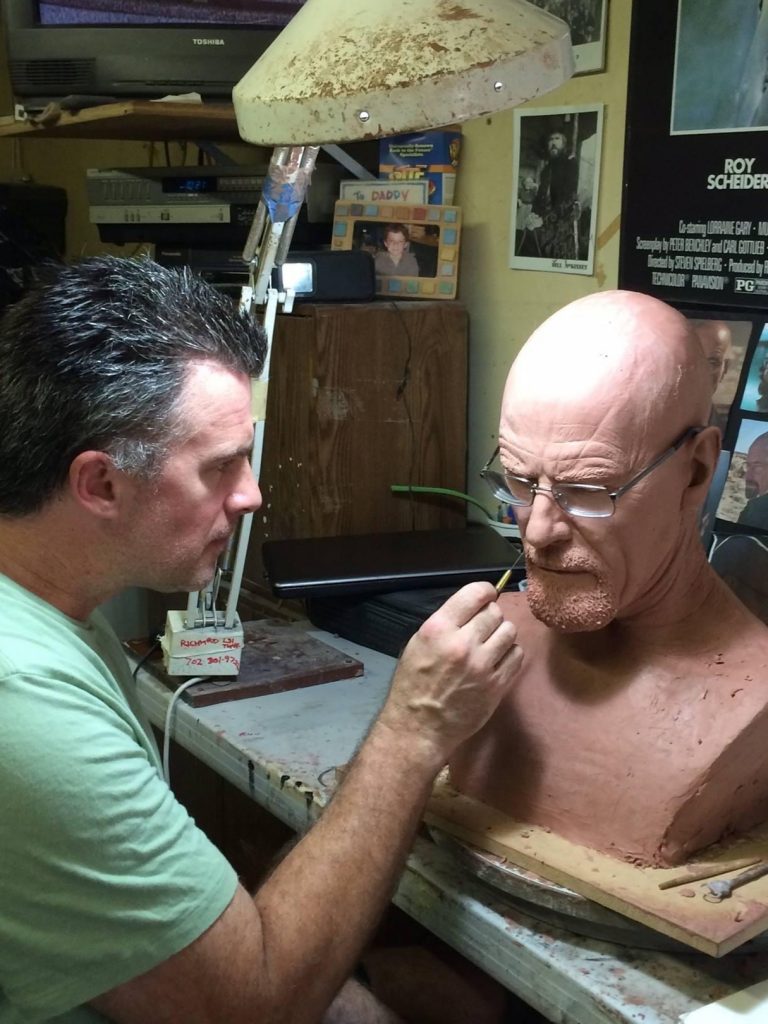
“My mother was an artist,” Nick says. “I remember her helping my brother with his drawing. It was two dimensional art, but it fascinated me.”
At age eight, Nick received Playdough for Christmas. “Now my art was three dimensional,” he says. “My first sculpture was King Kong from the original 1933 movie. Stop motion animation fascinated me, at that time. I loved seeing The Black Scorpion at the Skyway drive-in—a 1950s sci-fi movie about a Claymation scorpion the size of a house.”
By his early teens, inspired by the films of Ray Harryhausen—special effects creator for such classics as The Beast from 20,000 Fathoms and Earth vs. the Flying Saucers—Nick honed his skills as a sculptor by making his own stop motion movies. He also practiced special effects makeup on his friends every Hallowe’en. Then: tragedy.
“An article in Fangoria magazine said that stop motion movies were on their way out,” Nick says. “I loved that stuff and wanted to make a career of it, but Fangoria said it was done. So, I wondered: ‘What’s my fall back?’”
He continues: “I loved Planet of the Apes and the original Frankenstein movie and their wonderful prosthetic makeup. So, I thought: ‘I can do that!’ But there was no Internet in the early ’80s, no YouTube and very few books on the subject.”
Nick enjoyed working on people’s faces, changing them. Sculpture was his first love, but he found prosthetic makeup was a type of sculpture.
“I knew I had to go where the work was, so I got a student visa to work in the U.S., in California,” he says. “The only person I knew there was my Aunt Lori, who lived outside of Burbank. I slept under her table for a few months.”
Instead of a plan, Nick had a willingness to go out of his comfort zone. A shy guy by nature, he understood he needed to go outside of himself in order to find work. He got out the Yellow Pages looked up “special effects makeup” and called the first telephone number he found: Kevin Yagher’s studio (Yagher was famous for doing Freddy Krueger’s makeup in Nightmare On Elm Street). As cold-calls go, it wasn’t terrible.
“Kevin gave me two pieces of advice that proved invaluable,” Nick recalls. “First, he told me to take Dick Smith’s makeup course—Dick Smith was the Godfather of movie makeup. And second, call Berman Studios because they hired new people.”
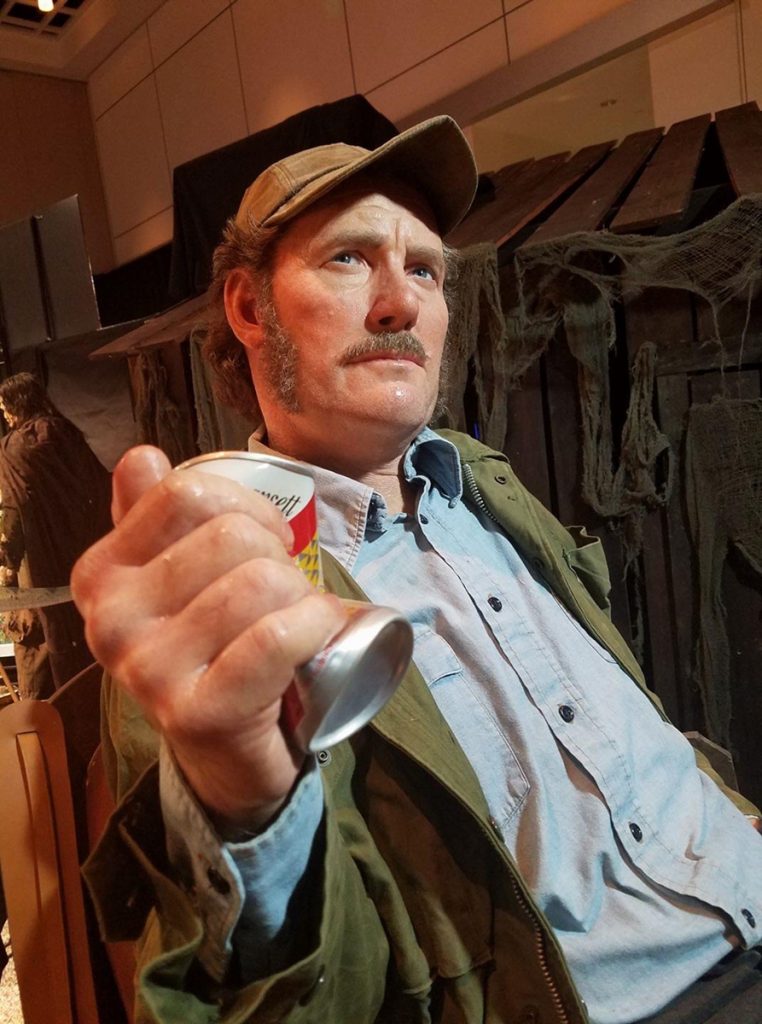
Dick Smith accepted Nick into his course, which was a confidence boost because Smith only took students he felt could “make it” in the industry. The boost, however, came with a reality check: “Your sculpting is quite crude,” Smith said.
“It was depressing to hear that, but I used it as motivation,” Nick says.
Nick called Berman Studios—owner Tom Berman had helped John Chambers on Planet of the Apes—and learned they were looking for a sculptor. “Can you start tomorrow?” the secretary said.
Through a process of maniacal hard work and continuously pushing himself out of his comfort zone, Nick made his way in Hollywood as a sculptor and prosthetic makeup artist, landing jobs on the Jurassic Park and Nightmare On Elm Street franchises, among other projects.
Although it was the progression of time, experience and a growing portfolio of work that propelled Nick’s career, his intensively life-like sculpture of actor Robert Shaw as “Quint” raised his profile considerably.
“I owe my movie makeup and sculpting career to ‘Quint,’” Nick says. “In the early ’90s, the Mad Monster Model Party was a trade show where sculptors showed off their work. Jaws is my favourite movie, so I sculpted Quint.”
In a sea of monsters, Nick’s “Quint” was the only human likeness and it was quite a hit. There is no secret or shortcut in how Nick achieved the eerie realism of “Quint”. The sculpture looks alive. An executive from Warner Brothers observed: “If you didn’t get it so perfect, it would have no affect on people.”
“I don’t idealize my subjects,” Nick explains. “I’m obsessed with detail. I’m not interested in doing a sculpture. I want that person to be alive right in front of me in silicone.”
Nick’s bronze bust of Detroit Red Wing Bob Probert came from a different place. Nick and Probert had been friends since the beginning of Probert’s NHL career.
“The Probert sculpture is based on one of my favourite photos of him—sitting in the penalty box,” Nick says. “I started the piece in 2012. I recently spoke with Bob’s wife, Dani, and she felt I really captured him—the eyes, his jawline. It felt good to hear that.”
Nick has no specific plans for the bust. One idea is to have 24 limited edition busts, a signature series—24 because that was Probert’s jersey number. These could be auctioned off with the proceeds going to Probert’s foundation.
These days, Nick runs his own studio near LA. Although he has decades of experience in the industry, he still pauses to marvel at his journey. He has honed his craft by being brutally honest with himself and when asked what advice he would offer aspiring makeup artists, he is equally blunt: “If there is anything else you can do, do that, instead,” Nick says. “You have to work so hard. Never accept something is ‘good enough.’ People think I just woke up one day and could do this. It has been a long journey and it was torturous.”
To see more of Nick’s work, visit his website www.nickmarrastudios.com.


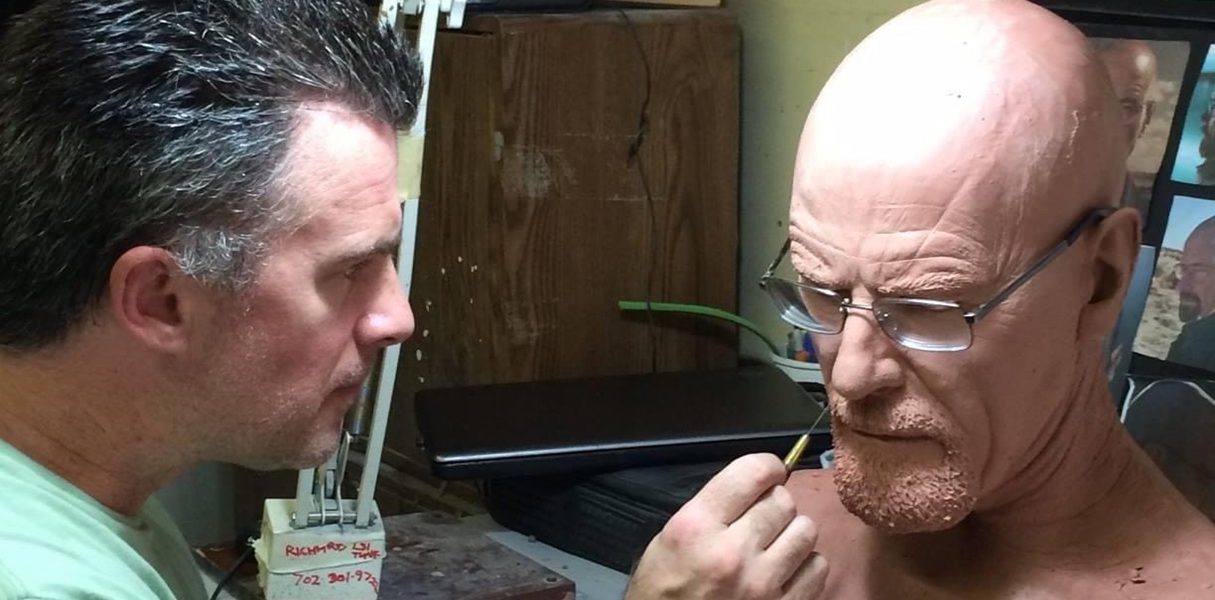
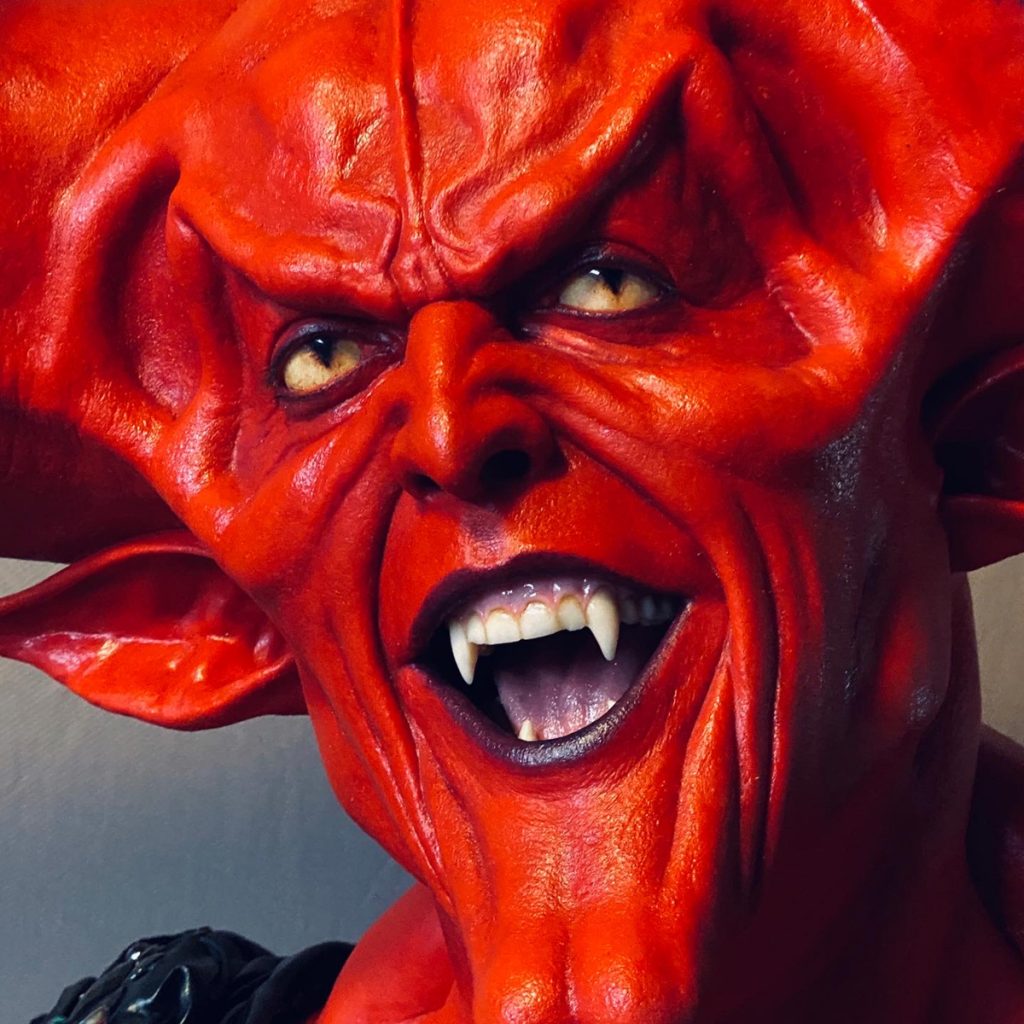
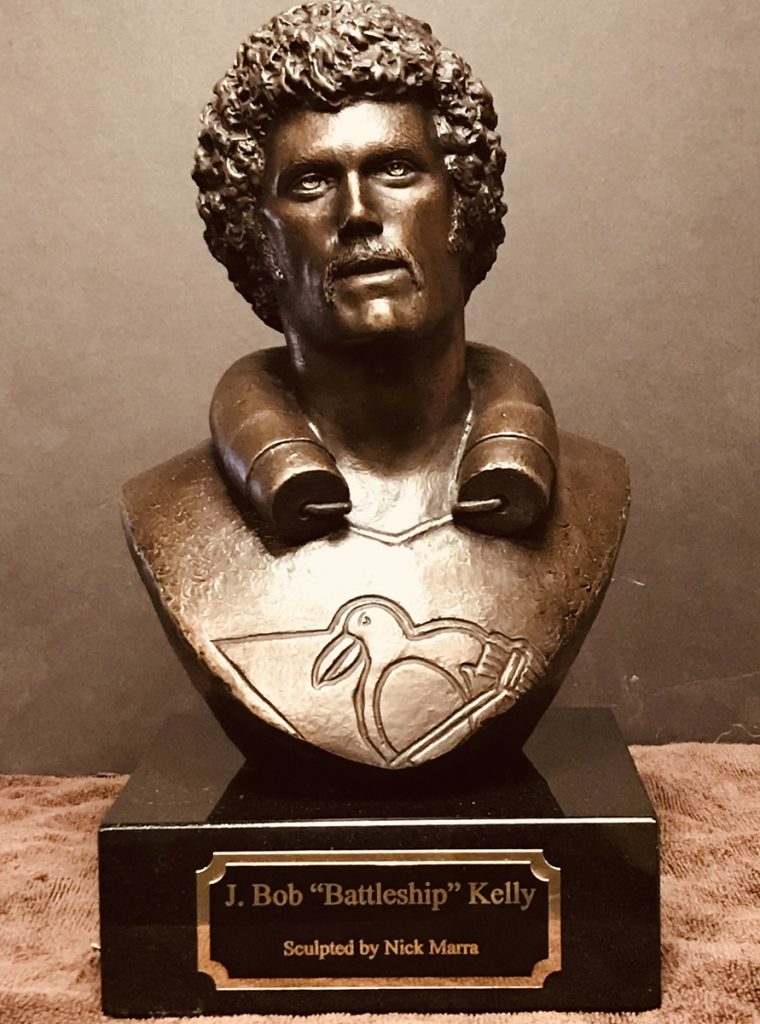

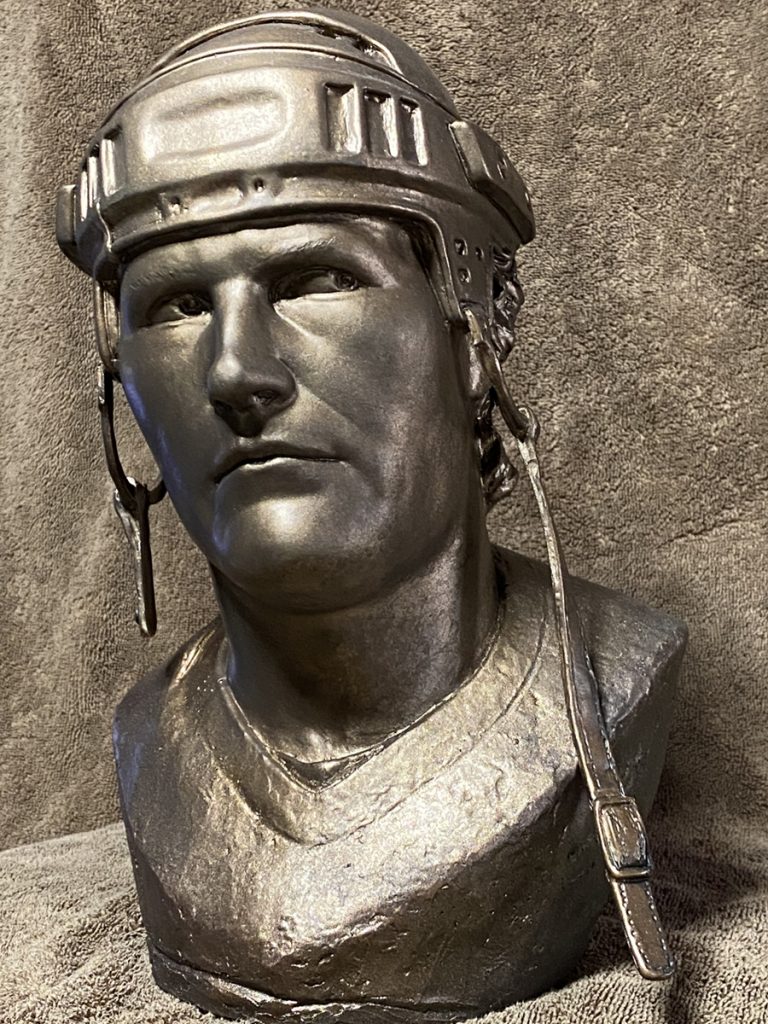

Add comment